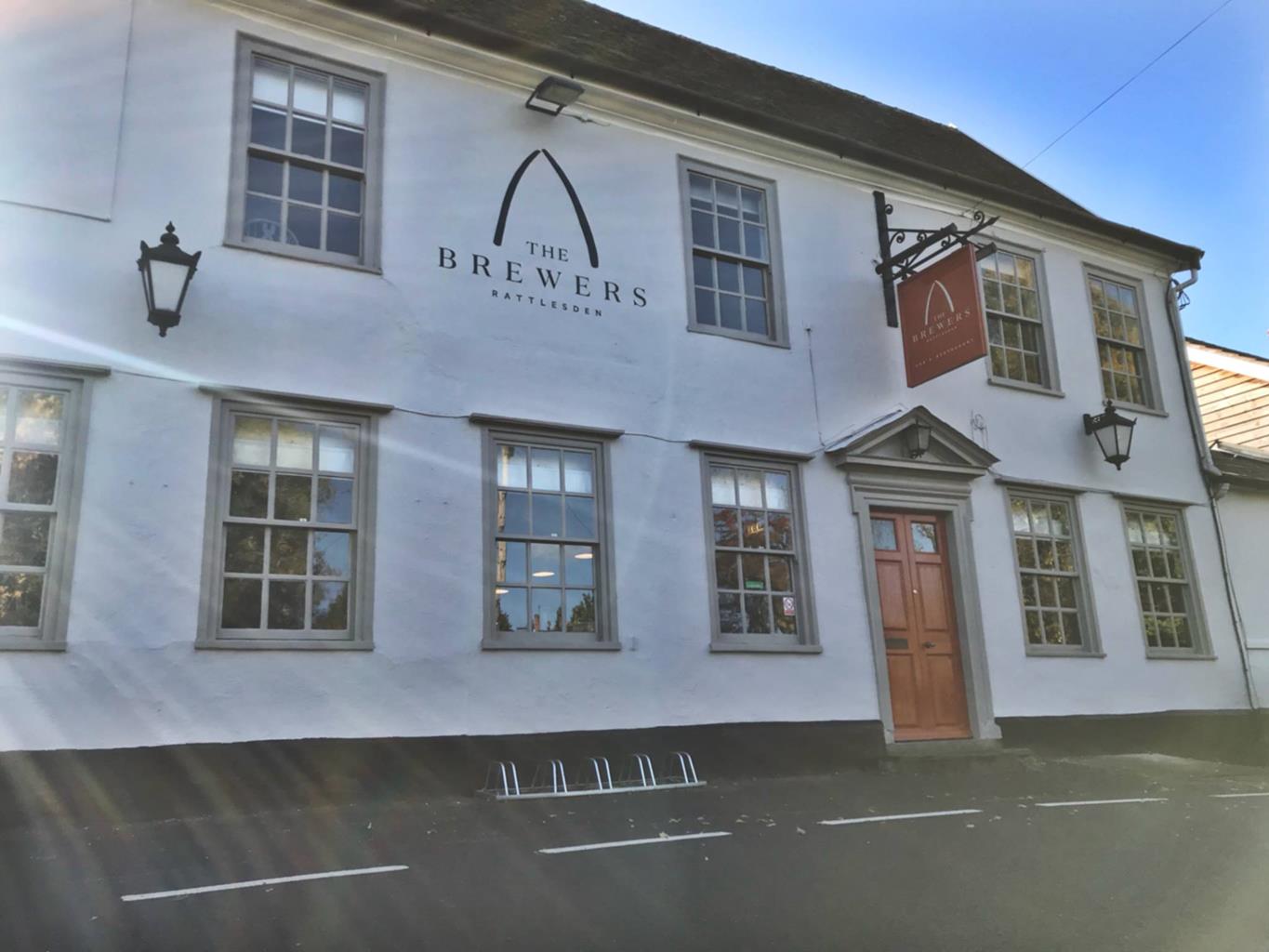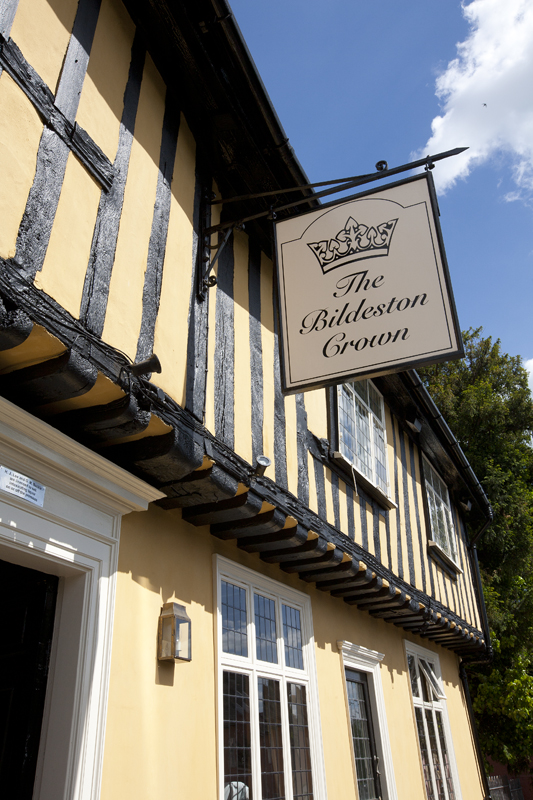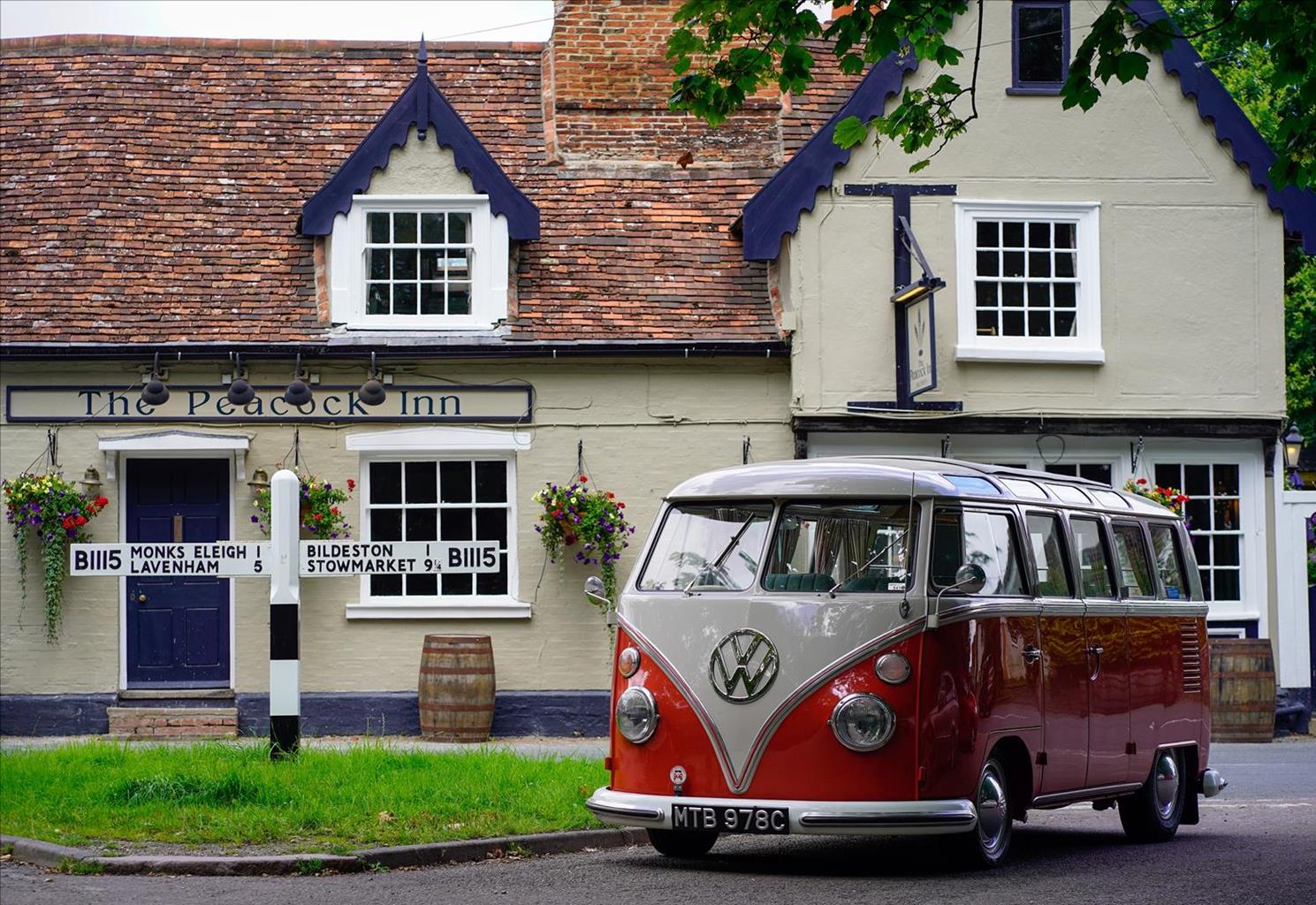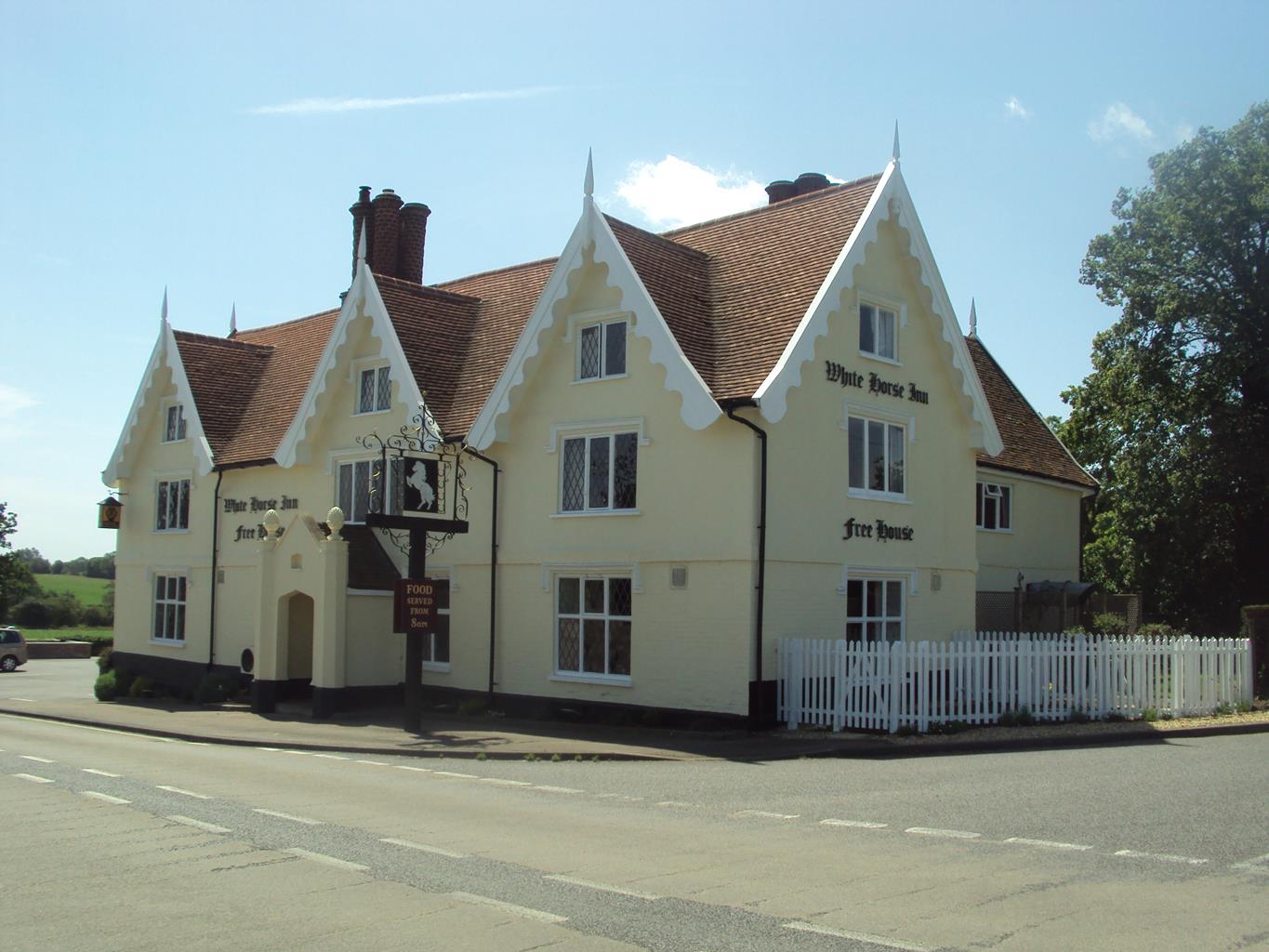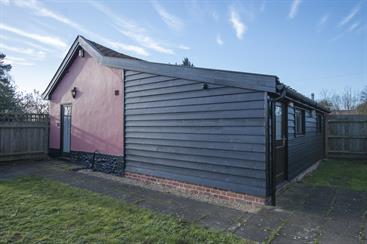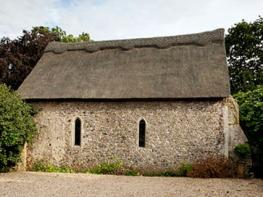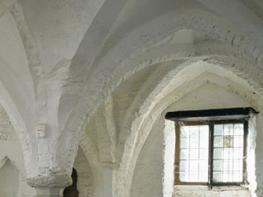In the village of Great Finborough in the heart of Suffolk, Jackbridge Cottage boasts a tranquil…
Stowmarket in the heart of Suffolk

Rural, urban and industrial landscapes all feature on this walk, together with a fascinating museum.
6 miles (9.7kms)
About the walk
Stowmarket, right in the centre of Suffolk, is a typically attractive and prosperous market town that has developed to encompass a healthy mix of farming, industry and trade. This makes it a fitting home for the Museum of East Anglian Life, a 70-acre (28ha) open-air museum in the grounds of the former Abbot's Hall Estate.
Museum of East Anglian Life
The museum tells the story of the people of East Anglia through displays on agriculture, work and domestic life. Among the exhibits are a recreated Victorian kitchen, an old schoolroom and a collection of gypsy caravans. There are regular demonstrations of blacksmithing and charcoal-making, as well as harvesting in summer. There are also Suffolk Punch horses, local breeds of sheep and pigs, meadows, wildflower gardens and a walk beside the River Rat (which sounds like a character out of Toad of Toad Hall, but is in fact the local name for the Rattlesden).
Rescued buildings
However, what makes the museum really interesting is its collection of old buildings. Apart from the 14th-century tithe barn near the entrance, which houses a display of farming tools, all of the buildings have been moved here from elsewhere. The oldest is the 14th-century aisled hall of Edgar's Farmhouse, rescued from the neighbouring village of Combs when it was threatened by a housing development in 1971. The roof beams of this half-timbered farmhouse are still coated in soot from the fire that once burned in the open hearth.
Other buildings include a wind pump that was used to drain water from the Minsmere marshes, an 18th-century blacksmith's forge, a watermill, a chapel and a 19th-century factory building containing exhibits relating to East Anglia's industrial heritage. Exhibits in the recently constructed William Bone Building tell the story of Ransomes, the company founded by Robert Ransome, which began in 1789 as a two-man foundry in Ipswich and grew to become one of the biggest producers of agricultural machinery in the world. Ransomes lawnmowers, which included the first petrol mower and the first electric mower ever to be produced, were used on tennis courts and golf courses, at Kew Gardens and Regent's Park, and exported to countries from Russia to Argentina. In 1998, the company was sold to the American corporation Textron but it continues to operate a factory in Suffolk.
The industries of East Anglia were traditionally rural crafts, such as brewing, basket making, rope making and tanning. This last craft was particularly important in Combs. This walk takes you across farmland between Stowmarket and Combs, then ends with a riverside stretch by one of the biggest paint factories in the world. It may not be particularly pretty, but ICI is as much a part of Stowmarket's history as the river, the railway, the maltings and the farm.
Walk directions
From the car park, take the path that runs past the museum and the gates of Abbot's Hall. When the path divides, fork right alongside a high brick wall, then turn right along a lane. At the end of the lane, turn left and look for a narrow path between the houses on the right, just before No. 19. Stay on this path as it drops down to the river, then turn left along a wide lane between houses and the River Rattlesden.
Reaching a road, turn right across the bridge and fork right when the road divides. Just before the Magpie Inn, turn right through the shopping precinct to reach Combs Lane. Cross the road and walk along the pavement until you cross a small stream just beyond Edgecomb Road.
Turn left at the stream by a telegraph pole with a 'Charcoal and Churches' circular walk sign. The path follows the stream then heads through a wood and into open countryside. Cross a footbridge and turn right along a field-edge path.
At a metal barrier, turn left along a tarmac lane, past a mobile phone tower and reservoir. Turn right at the T-junction, then fork left along Mill Lane. After 70yds (64m), turn left on a path that runs between parkland and fields. Turn left at the road to pass an old tannery, then head left on a tarmac path at Webb's Close to climb to the centre of Combs. Turn right at the road and walk past the old village school.
At the junction, turn right and immediately left, dropping down between the fields. Cross a footbridge and follow a field-edge path to the right. Go through a gate and bear diagonally across the field to reach a junction where you turn left, passing a thatched farmhouse on your way to Combs Wood.
Stay on this path as it runs alongside the wood and into a housing estate. Continue straight ahead on the paved path, crossing Lavenham Way and diverting around a school, turning right when you reach the school and left to continue around its fence, then left at the bottom, then right.
Turn right on Needham Road, then left along Gipping Way. Immediately before the paint factory, turn right, cross a bridge and go left on the signed Gipping Valley River Path. Follow this path to the old maltings as depicted in an etching that spans the bridge.
Climb the steps to the bridge and turn left along Navigation Approach. Keep straight ahead at the crossroads, up Milton Road South then, at the end, turn right along a partly pedestrianised one-way street called Ipswich Street. At Market Place turn left to go back to the start.
Additional information
Town streets and footpaths, country lanes, field-edge and riverside paths
Town, river, farmland and woodland
Dogs should be kept on lead
OS Explorer 211 Bury St Edmunds & Stowmarket
Meadow Centre pay-and-display car park, Stowmarket (follow signs to Museum of East Anglian Life)
At Meadow Centre
WALKING IN SAFETY
Read our tips to look after yourself and the environment when following this walk.
Find out more
Also in the area
About the area
Discover Suffolk
Suffolk is Constable country, where the county’s crumbling, time-ravaged coastline spreads itself under wide skies to convey a wonderful sense of remoteness and solitude. Highly evocative and atmospheric, this is where rivers wind lazily to the sea and notorious 18th-century smugglers hid from the excise men. John Constable immortalised these expansive flatlands in his paintings in the 18th century, and his artwork raises the region’s profile to this day.
Walking is one of Suffolk’s most popular recreational activities. It may be flat but the county has much to discover on foot – not least the isolated Heritage Coast, which can be accessed via the Suffolk Coast Path. Southwold, with its distinctive, white-walled lighthouse standing sentinel above the town and its colourful beach huts and attractive pier features on many a promotional brochure. Much of Suffolk’s coastal heathland is protected as a designated Area of Outstanding Natural Beauty and shelters several rare creatures including the adder, the heath butterfly and the nightjar. In addition to walking, there is a good choice of cycling routes but for something less demanding, visit some of Suffolk’s charming old towns, with streets of handsome, period buildings and picturesque, timber-framed houses.
Nearby stays
Restaurants and Pubs
Nearby experiences
Recommended things to do
Why choose Rated Trips?
Your trusted guide to rated places across the UK
The best coverage
Discover more than 15,000 professionally rated places to stay, eat and visit from across the UK and Ireland.
Quality assured
Choose a place to stay safe in the knowledge that it has been expertly assessed by trained assessors.
Plan your next trip
Search by location or the type of place you're visiting to find your next ideal holiday experience.
Travel inspiration
Read our articles, city guides and recommended things to do for inspiration. We're here to help you explore the UK.

